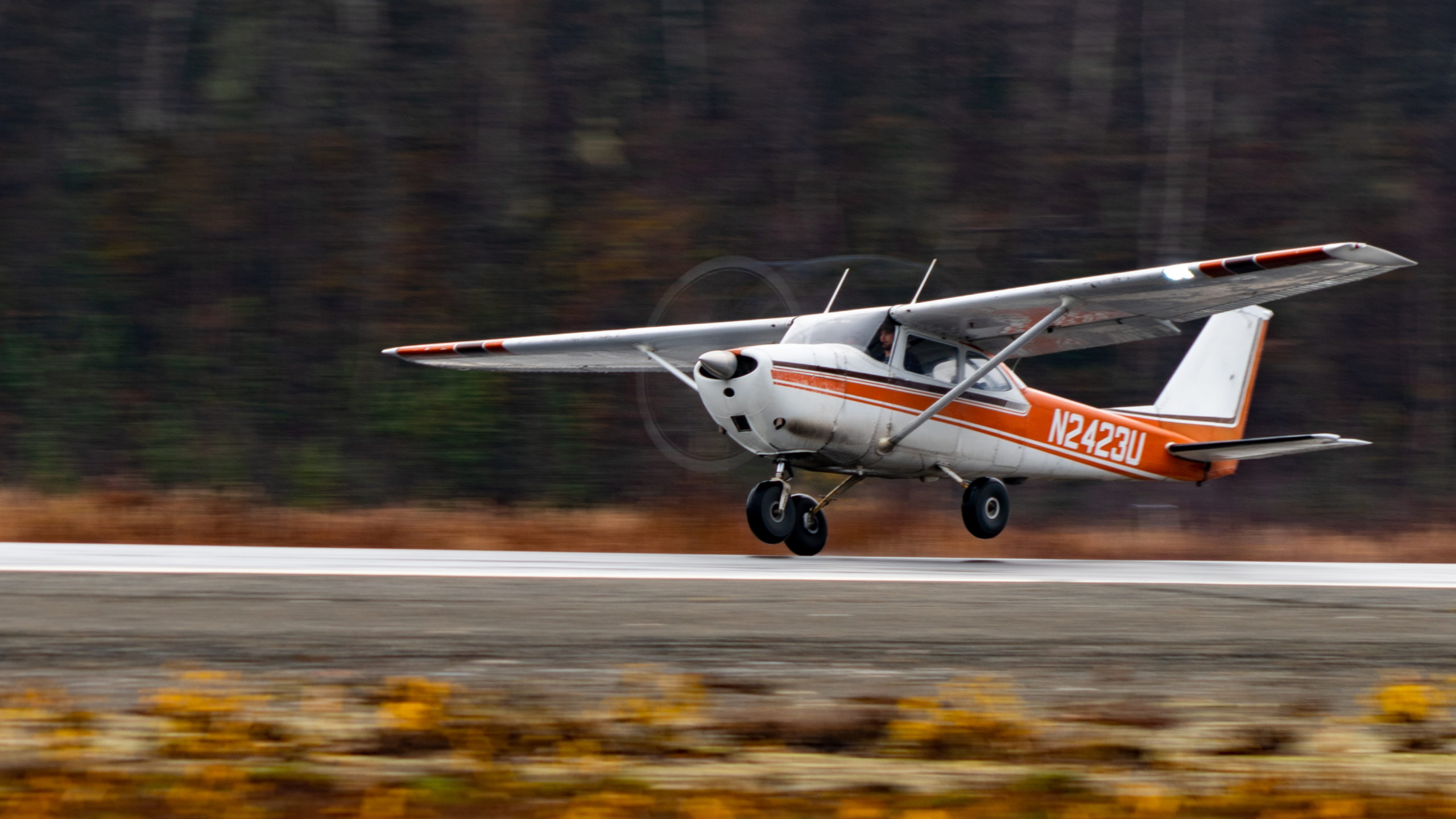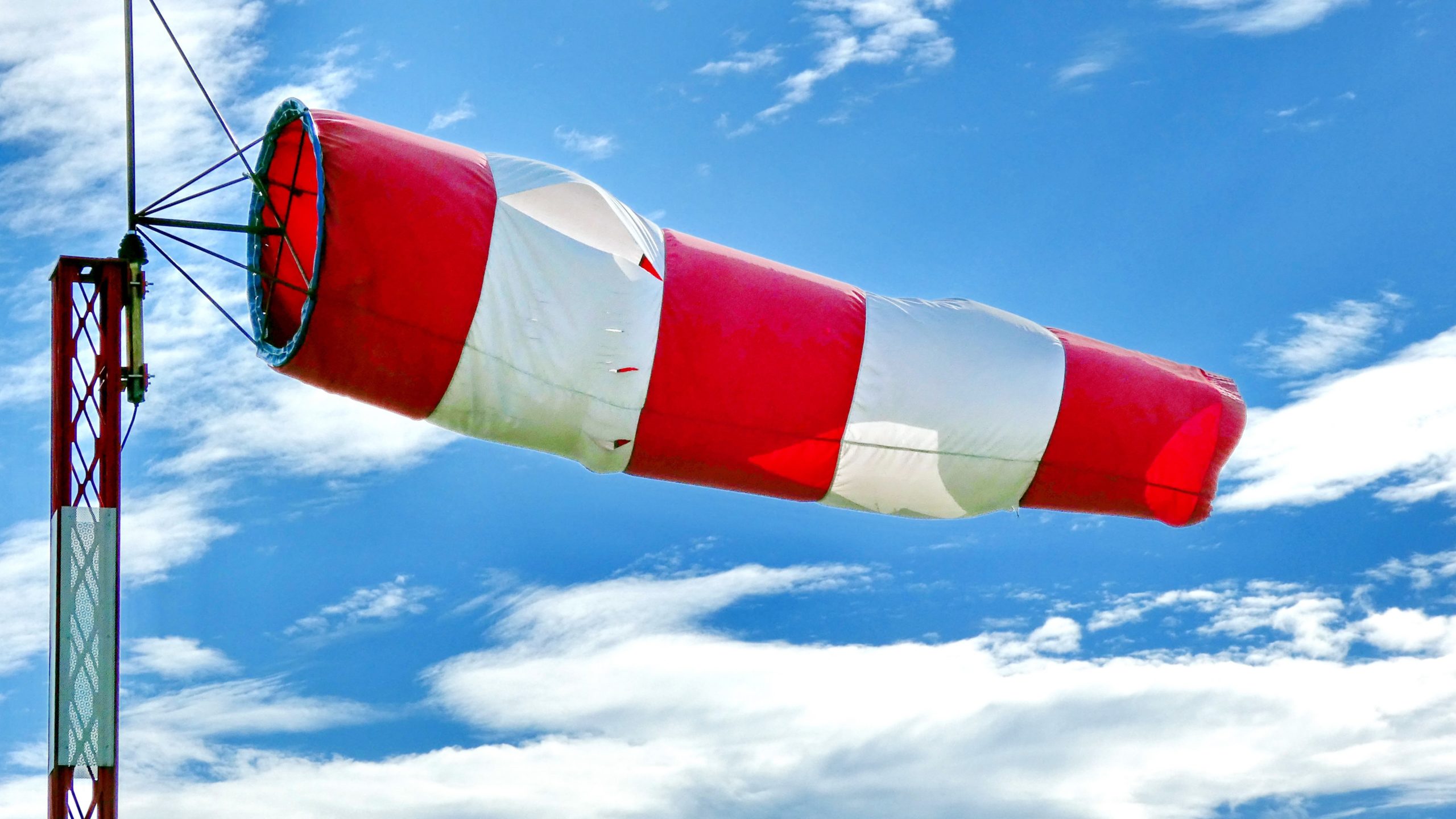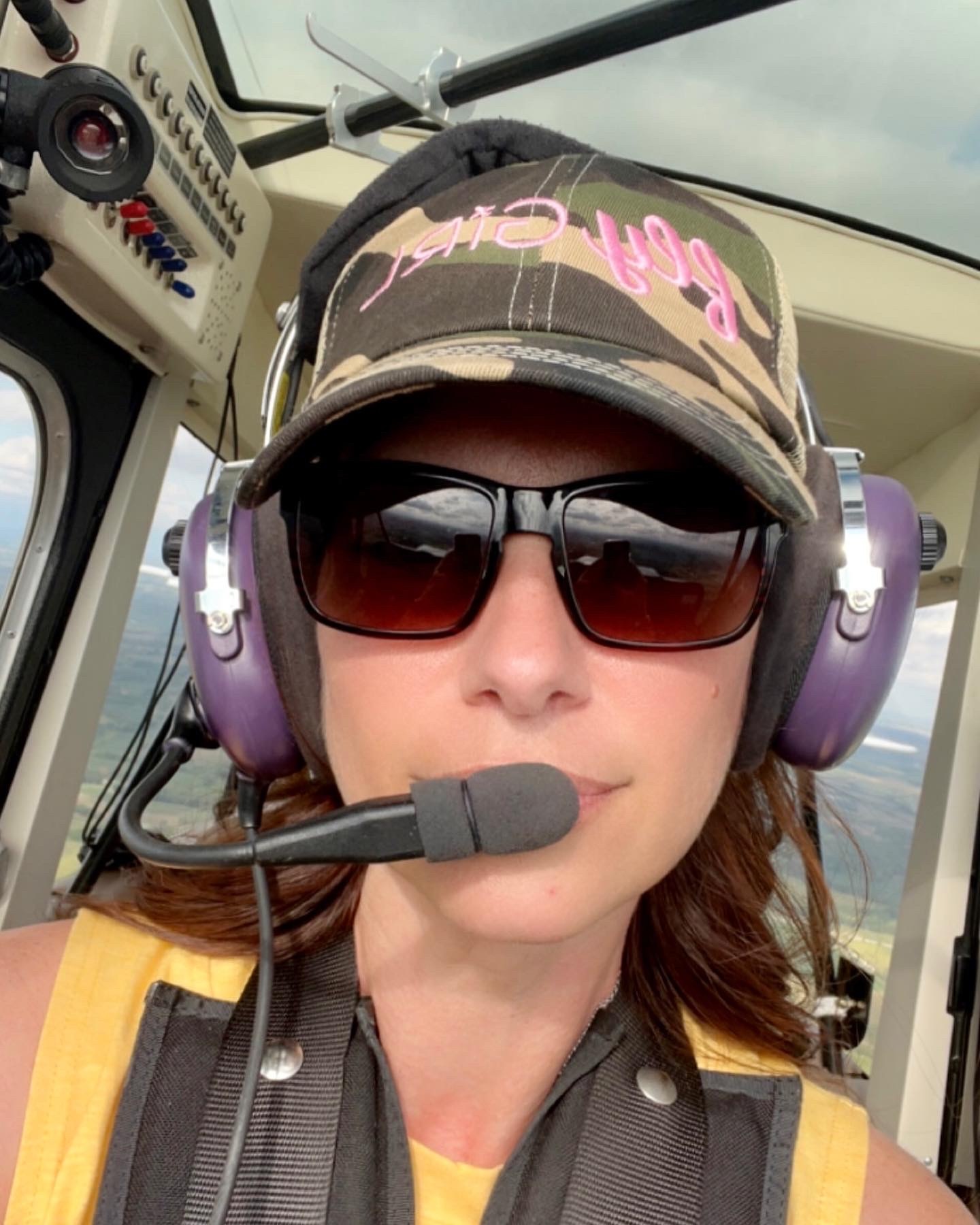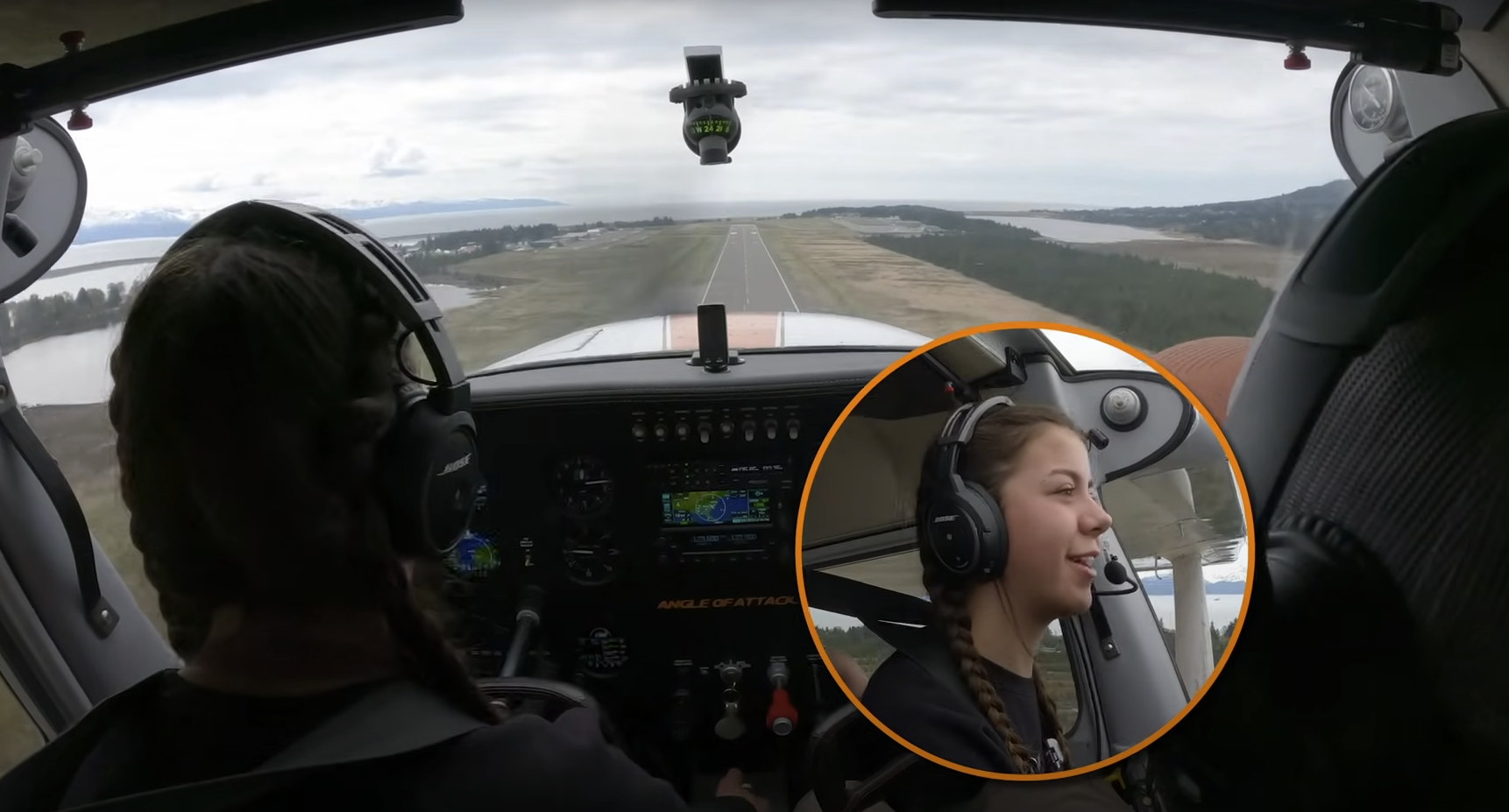
Every aircraft has a maximum crosswind handling limit. It’s usually there in the aircraft manual for reference. For example, the maximum demonstrated crosswind for Boeing 777 is 38 knots. If exposed to anything above this limit, chances are high that the aircraft’s upward wing will lift, thus weathercocking with acceleration. All of this affects the aircraft’s takeoff (and also landing.) Learn more about calculating crosswinds on Angle of Attack.
How To Takeoff In A Crosswind?
Initial Takeoff Roll
The initial takeoff roll in a crosswind is similar to a normal takeoff, except that you must hold the aileron control INTO the wind. This will raise the upwind wing, imposing a downward force on the wing to counteract the crosswind’s lifting force. All this prevents the wing from rising.
As you taxi the plane into the takeoff position, remember to check the wind direction indicators and windsock to recognize better and anticipate crosswinds. This is because the full aileron should be held into the wind if the crosswind is indicated as the takeoff roll starts.

Maintain this control position while the airplane accelerates until the ailerons become sufficiently effective to maneuver the aircraft about its longitudinal axis. Use rudders to hold the takeoff path straight with the aileron in the wind. Normally, you’ll require a downward rudder pressure here since the airplane will weathervane into the wind perpendicular to the runway.
When applying the takeoff power, check that the P-factor is sufficient to counteract this weathervaning tendency caused by a crosswind component from the right. However, it may also aggravate the aircraft’s tendency to change its direction toward the left when the wind is from the left. Nevertheless, the right rudder pressure is a must to keep the aircraft straight down the runway.
As the crosswind becomes more of a headwind and the plane’s forward speed increases, reduce the mechanical holding of the full aileron into the wind. By doing so, the ailerons will become more effective. As the crosswind becomes less effective, gradually reduce the aileron pressure.
However, maintain some pressure throughout the takeoff roll, as the crosswind component effect won’t vanish completely. Otherwise, the upwind wing will rise, thus exposing more surface to the crosswind, resulting in a “skipping” action that imposes extreme side stresses on the landing gear and results in structural failure.
The skipping action is usually implied by a series of very small bounces generated by the aircraft attempting to fly and settling back onto the runway. During these bounces, the crosswind also moves the aircraft sideways.
Liftoff
With the nose wheel lifted off the runway, hold the aileron control into the wind for the downwind wing and the main wheel to lift off the runway first, with the remainder of the takeoff roll being made on that one main wheel. This will prevent side-skipping.
However, keep the main wheels on the ground slightly longer than if there’s a significant crosswind to tackle. This will ensure a smooth but definite liftoff, letting you add wind correction for the takeoff. In addition, doing this will avoid excessive side-loads on the landing gear, preventing possible damage resulting from the airplane drifting.
Initial Climb
As soon as the aircraft lifts off, it’ll sideslip into the wind to counteract its drifting effect. Continue this sideslipping until the aircraft achieves a positive rate of climb. When achieved, turn it into the wind to establish enough of a wind correction angle to counteract it, and then the wings roll level.
Use rudders aggressively to keep the plane straight on the runway. Continue the climb with the wind correction angle to follow a ground track aligned with the runway direction. However, frequently check the actual ground track and adjust the wind correction as necessary because the crosswind’s force may vary markedly within a few hundred feet of the ground.
Voilà. You just made a perfect crosswind takeoff.
For reference check out this segment on crosswind takeoffs and landings from Chris– it’s a necessary maneuver to master!)
Common Errors To Avoid During A Crosswind Takeoff
While taking off during a crosswind, avoiding these errors is necessary.
- Not getting the active runway cleared of water or snow before taxing
- Lifting off the wheels prematurely and in an incorrect order
- Insufficient drift correction after liftoff
- Extreme aileron input in the takeoff roll’s later stage
- Using less than full aileron pressure
- Mechanical use of aileron control instead of manually sensing its need as and when required during the takeoff
How To Takeoff In A Crosswind: FAQs
What Is The Proper Crosswind Takeoff Technique?
The proper crosswind takeoff technique involves lifting off the nose wheel first, the downwind wheel second, and lastly, the upwind wheel.
What Is The First Correction In Taking Off With A Left Crosswind?
The first correction a pilot must make taking off with a left crosswind is applying full aileron pressure into the wind.
How Much Wind Is Too Much To Takeoff?
According to the FAA’s Flight Training Handbook, 20% of the stall speed is the maximum allowable crosswind for an aircraft. For example, an aircraft that stalls at 60 knots can deal with a direct crosswind of 12 knots.
How Can A Pilot Counter The Effects Of Crosswinds?
A pilot can counter the effects of crosswinds using the ailerons.
You’re Ready To Takeoff In A Crosswind!
Here you go. That’s how you add another feather to your cap as a private pilot by taking off in a crosswind like an expert. From the initial takeoff roll to the initial climb, passing the crosswind requires the impressive skill of figuring out the crosswind component and finesse to get it beautifully right. And the right private pilot training helps you exactly with this.
As per the crosswind component rule of thumb, the crosswind component is approximately 50% of the wind speed if the wind is 30° off the runway, 75% if the wind is 45° off the runway, and roughly the same as the total wind speed if the wind is 60° or more off the runway.

Karey grew up and obtained her in private pilot’s license in Central Iowa. She fell in love with tailwheel aircraft during her primary training and obtained a tailwheel endorsement the week following her private pilot checkride. She is eager to obtain her seaplane rating and is merging her passion for flying with her prior work career. Karey has a background in marketing, editing, and web design after graduating from Simpson College. When she is not flying or working, Karey enjoys anything related to technology and admits she can be a bit of a nerd. She also has discovered a love for virtually all outdoor pursuits, with a special fondness for climbing, shooting, and hiking.

Stay Connected
Be the very first to get notified when we publish new flying videos, free lessons, and special offers on our courses.





